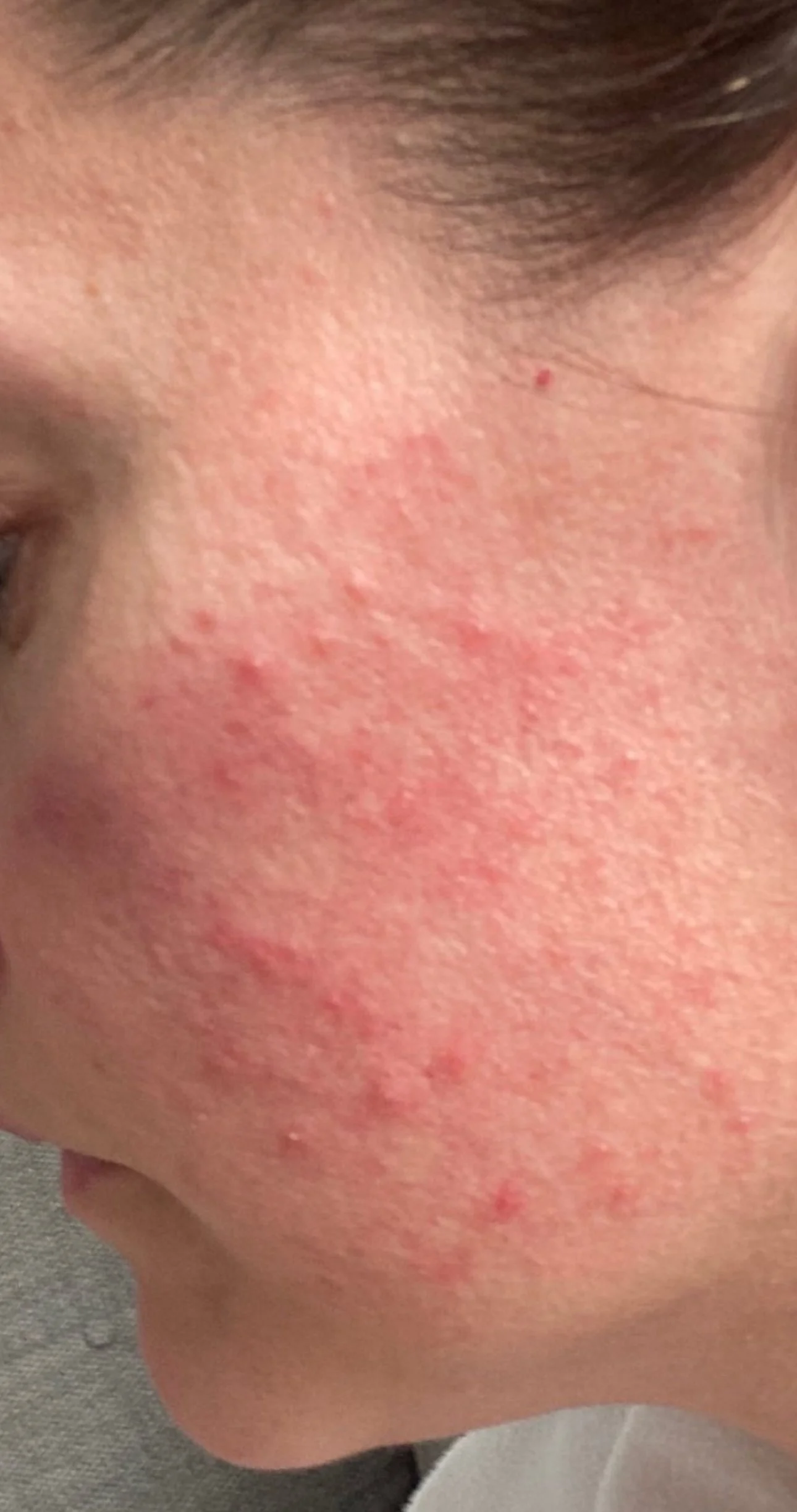Skin Concerns
Acne
Acne is a common skin condition that affects most people at some point. It causes spots, oily skin and sometimes skin that's hot or painful to touch.
Acne most commonly develops on the face, back and chest.
There are 6 types of spots caused by acne
Whiteheads – have a similar appearance to blackheads, but may be firmer and will not empty when squeezed
Papules – small red bumps that may feel tender or sore
Pustules – similar to papules, but have a white tip in the centre, caused by a build-up of pus
Nodules – large hard lumps that build up beneath the surface of the skin and can be painful
Cysts – the most severe type of spot caused by acne; they're large pus-filled lumps that look similar to boils and carry the greatest risk of causing permanent scarring
Blackheads – small black or yellowish bumps that develop on the skin; they're not filled with dirt, but are black because the inner lining of the hair follicle produces colour
If you want to know how I am able to help Contact us today or Book here
Ageing
Its something that happens to us all during our life, that we cannot control, but how it ages depends on a variety of factors.
Your Lifestyle
Diet
Hereditary
Plus other personal habits
One of the most visible signs of ageing is changes in the skin – fine lines, wrinkles, sagging, age spots and much more.
Why does our skin age?
There are many layers to the skin, but it is generally broken down into three main parts:
Epidermis – this is the outer layer of skin containing skin cells, pigments and proteins. Acts as a barrier to prevent infection from external factors
Dermis – the middle layer containing blood vessels, nerves, hair follicles, oil glands and an arrangement of extracellular matrix (ECM) proteins including collagen and elastin. Cushions the skin from stress and strain, and provides nutrients to the epidermis
Hypodermis – the innermost layer of skin containing sweat glands, hair follicles, blood vessels and fat. Acts as an insulator to regular body temperature
As we age from the age of 25 the skin begins to lose its elasticity, due to a break down in the connective tissue – this is what makes the skin thinner, more prone to sagging and less likely to heal itself from injuries. We also become more prone to bruising and bleeding under the skin as the blood vessels of the dermis become more fragile.
It is so important to help slow the ageing process by looking after your skin at a young age.
If you would like to know more please contact us today, or why not book in for a new client appointment so your skin can be assessed in more detail?
HyperPigmentation
Hyperpigmentation causes patches of skin to become darker than the surrounding skin. It occurs when the skin produces excess melanin, the pigment that gives skin its colour.
Hyperpigmentation is very common on skin of colour, as darker skin tones already have a higher melanin content. Burns, bruises, acne, rashes, or other trauma to the skin can cause it to produce more melanin and lead to dark spots.
Types of Hyperpigmentation include:
Age spots (also known as Liver spots)
Melasma
Post Inflammatory Hyperpigmentation
The most common causes of Hyperpigmentation are:
Sun Exposure
Skin Inflammation
Melasma (hormonal for example pregnancy)
Reactions to some medications
Medical Conditions
If you would like to know more or find out how I can help contact us today or, Book Here!
Roasacea
No-one knows the axact cause of rosacea, however some of the triggers include:
Extreme temperatures
Sunlight
Hot baths and showers
Aerobic Exercise
Stress/Anxiety
Certain foods and drinks, such as alcohol, caffeine, hot drinks and spicy foods
Hormonal changes
Certain cosmetics and pharmaceuticals
Although there is no cure for rosacea there are treatments that can help control and reduce the signs and symtoms
You can contact us now to find out how we can help, or why not book in for a new client appointment




